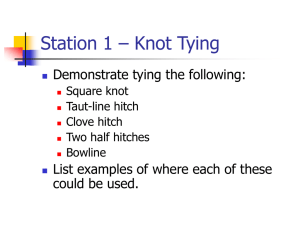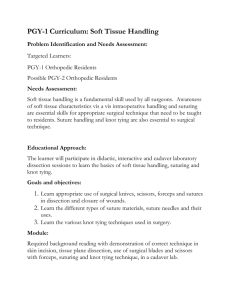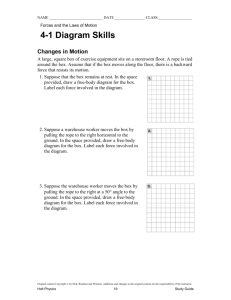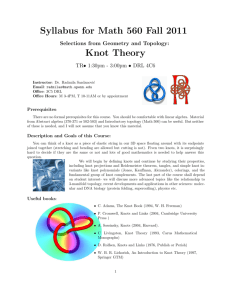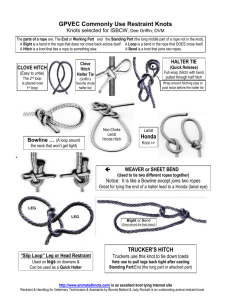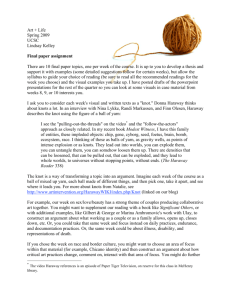Knot Tying - Boy Scout Troop 404
advertisement
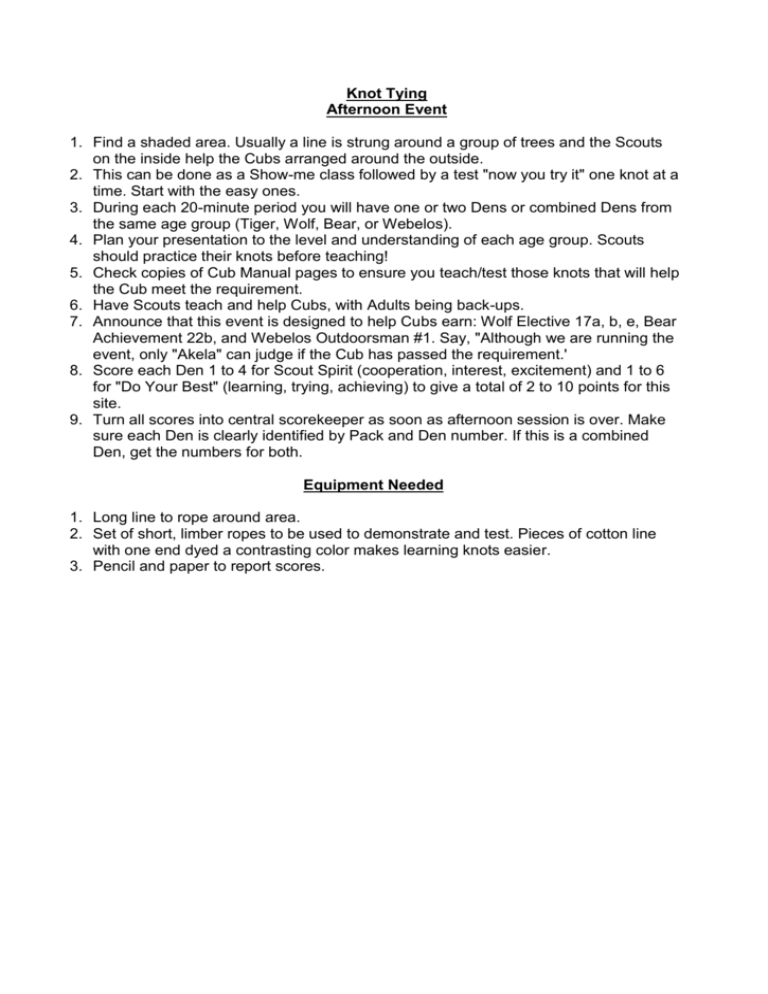
Knot Tying Afternoon Event 1. Find a shaded area. Usually a line is strung around a group of trees and the Scouts on the inside help the Cubs arranged around the outside. 2. This can be done as a Show-me class followed by a test "now you try it" one knot at a time. Start with the easy ones. 3. During each 20-minute period you will have one or two Dens or combined Dens from the same age group (Tiger, Wolf, Bear, or Webelos). 4. Plan your presentation to the level and understanding of each age group. Scouts should practice their knots before teaching! 5. Check copies of Cub Manual pages to ensure you teach/test those knots that will help the Cub meet the requirement. 6. Have Scouts teach and help Cubs, with Adults being back-ups. 7. Announce that this event is designed to help Cubs earn: Wolf Elective 17a, b, e, Bear Achievement 22b, and Webelos Outdoorsman #1. Say, "Although we are running the event, only "Akela" can judge if the Cub has passed the requirement.' 8. Score each Den 1 to 4 for Scout Spirit (cooperation, interest, excitement) and 1 to 6 for "Do Your Best" (learning, trying, achieving) to give a total of 2 to 10 points for this site. 9. Turn all scores into central scorekeeper as soon as afternoon session is over. Make sure each Den is clearly identified by Pack and Den number. If this is a combined Den, get the numbers for both. Equipment Needed 1. Long line to rope around area. 2. Set of short, limber ropes to be used to demonstrate and test. Pieces of cotton line with one end dyed a contrasting color makes learning knots easier. 3. Pencil and paper to report scores. Knot Tying Wolf Element 17a Tie It Right Do your shoes come untied all by themselves? Maybe the knots you tie are to blame. a. Learn to tie an overhand knot and a square knot. Overhand Knot Square Knot A square knot begins with an overhand knot and ends with another one backwards on top of the first. Knot Tying Wolf Element 17b Shoe-string Tie 2 Knot Tying Wolf Element 17e e. Tie two cords together with an overhand knot. Knot Tying Bear Achievement 22b b. Tie a square knot, bowline, sheet bend, two half hitches/and slip knot. Tell how each knot is used. SQUARE KNOT. A common knot made with two overhand knots. Square knots are used in first aid to tie bandages and to join two pieces of rope of the same thickness. BOWLINE. A knot to make a nonslip loop at the end rope. It is a rescue knot when tied around the waist. SHEET BEND. This knot looks like a bowline, but instead H making a loop, it joins ropes of different sizes. TWO HALF HITCHES. This knot is used to tic a rope post, a tree, or a ring. Knot Tying Bear Achievement 22b SLIP KNOT. This knot slips easily along the rope around which it is made. The knot itself is a simple overhand knot. It can be used to tie a rope to a post. c. Learn how to keep a rope from tangling. Before you put a rope away, lay the rope out straight on a dry surface. Be sure there are no kinks or knots in it. Hold the end of the rope in one hand and coil the rope around your forearm from hand to elbow. Loop it around as many times as necessary to take up all of the rope. Take it off your elbow; hold the coil in your hand and take off the last loop with your other hand. Make a few turns around the coils with this end and pass it through the top of the coil held by your hand. Knot Tying Webelos Outdoorsman 1 SHEET BEND: For tying two ropes together, especially when one is thicker than the other. BOWLINE: Used when you want a loop that will not slip or close up. It is often used in rescue work. Knot Tying Webelos Outdoorsman #1 Camp Knots You’ll use rope for many purposes when you go camping. Practice these knots. They'll come in handy in different situations. Square Knot: For tying two ropes together and for tying bandages in first aid. Taut-line Hitch: For tightening and loosening a rope easily and for use on tent guy lines. Tighten or loosen it by pushing the hitch up or down. Two Half Hitches: For tying a rope to a post or ring. It is strong but is easy to loosen.


